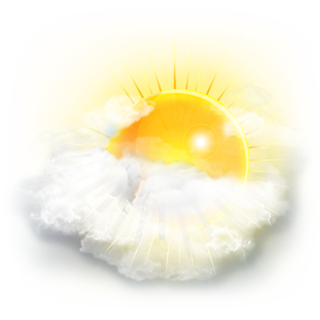Sultan Sooud al Qassemi, Emirati commentator on Arab affairs and a member of the Sharjah ruling family, who teaches at Boston College, discussed influential pieces of Middle Eastern art and their political undertones on Jan. 22 in Schwartz Hall 103.
Al Qassemi, an “an art lover and art collector,” started the lecture by displaying a painting of the Israeli war for independence by a Polish man, Moshe Bernstein, on a screen behind him. He contrasted it with another piece depicting Israel, this time showing the joy of the Sabbath. This work by Yohanan Simon was from around the same year as the Bernstein piece, but the art styles are completely different, he said. He added a third piece into the mix, an Aharon Kahana painting in mostly white and blue, again from the same time as the other works shown.
Al Qassemi showed how the same country or situation can be painted in many different ways with many different styles. He said that it would take about 30 years for Israel to create a coherent, common art style. He then showed pieces depicting the other side of the outcome of the war. While the first paintings showed Israel in victory, the next ones he displayed were about the defeat of Palestine, and the struggles that this new country brought to the Middle East.
The talk transitioned to work showing support for the Palestinian revolution in the 1980s. He showed work from Iran, a big supporter of Palestine, according to the presentation. Al Qassemi noted that the posters he was showing were from during the Iranian-Iraqi war. “Can you imagine,” he asks, “even during the war, the Iranians were standing in solidarity with the Palestinians.” Following this showcase was a presentation on solidarity with Algeria during its war of independence against France.
While talking about African art, al Qassemi focused specifically on Egypt, telling the story of Inji Efflatoun. She grew up a sheltered girl until she was introduced to Kamel El Telmissany, a communist radicalist. Under his influence, she too became radicalized and started a branch for women in the communist party and became a feminist activist. “What a rockstar,” said al Qassemi, describing her.
He then moved on to profile another artist he loves, Kadhim Haydar. He “stood at the nexus of intellectualism… he was a poet, he was a writer, he was a journalist, he was an artist, he was a playwright… but he was also a political activist.” Al Qassemi explained how Haydar would hide his political intentions in his artwork so viewers would have to search for them.
Next was a discussion on American friends of the Middle East. According to the sultan, Kermit Roosevelt, who led the CIA’s Middle East division during the Eisenhower administration and subsequently removed the head of a democratic nation in the Middle East, was the first one to launch the idea of funding Middle Eastern art.
He ended the lecture with quick talks on Nassar, calling him a beloved Egyptian president, and the Iran-Iraq war. The sultan joked that it’s basically impossible to find a bad painting of him. When discussing the war, he showed posters from both countries. “The Iranians were much better than the Arabs and the Iraqis with posters.”
This event was hosted by the Crown Center for Middle East Studies, the Islamic and Middle Eastern Studies Program, the Department of Politics, the Department of Fine Arts and the Rose Art Museum.
Editor’s note: This article was written based on a recorded video of the original lecture. It is possible that moments of the lecture were edited out of the video.


